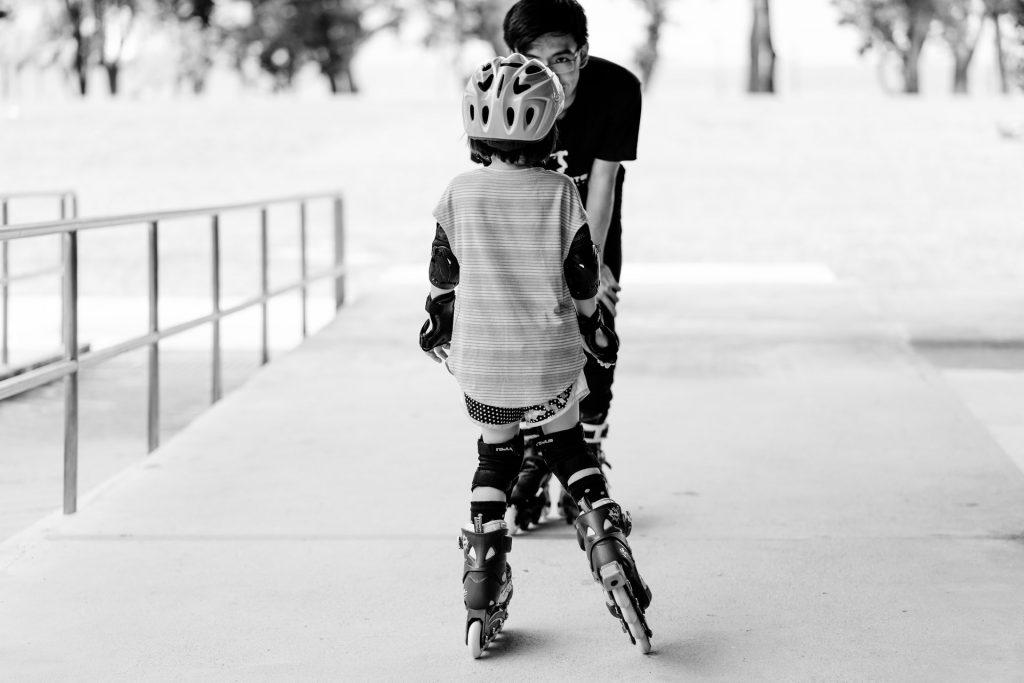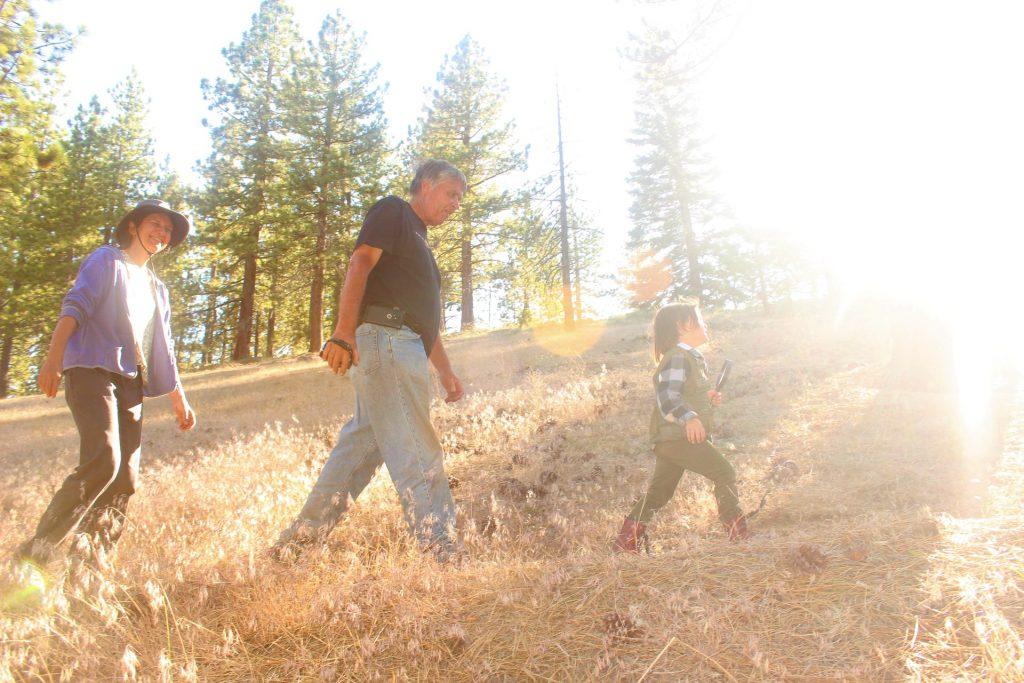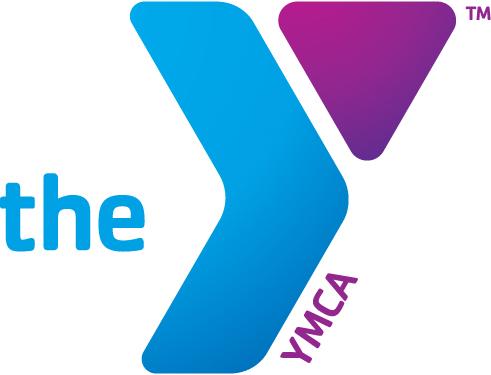1) Family physical activity models positive health behaviors for children.
Developing positive physical activity habits is like any other behavior—we learn by observing. Parents are children’s first role models and have the ability to shape attitudes about physical activity. When children adopt healthy physical activity habits, it benefits them not only as a youth but as teenagers and adults. A 21-year tracking study found that high levels of physical activity between the ages of nine and 18 predicted higher levels of physical activity in adulthood (Telama et al., 2005). The National Institutes of Health (NIH) recommends that parents not only participate in physical activity with their children but also facilitate environments that encourage self-directed physical activity. For example, parents can place equipment such as balls and jump ropes near doors and play areas. Additionally, parents can help kids to form healthy habits by limiting screen time, focusing on enjoyment (rather than competition), and by working with school officials and other caregivers to ensure that active playtime is encouraged even when children are not at home (NIH, 2013).

2) Families that move together build stronger social bonds.
Social bonds describe the level of closeness we have with our family members, friends, and other people we interact with every day such as coworkers and schoolmates. Our social ties impact several dimensions of our wellness, such as physical, emotional, and mental well-being. Strong social ties not only affect the quality of our lives, but they are also linked to longer life expectancy as well. Healthy social bonds develop over time. Making physical activity a family affair can provide protected time for family members to share joys and frustrations about their day, which is important in building trust and a sense of closeness. Furthermore, when families complete an exercise or physical-activity goal together—whether running a 5K or simply taking a 30-minute walk around the neighborhood—they get to enjoy a shared sense of accomplishment. These shared experiences strengthen family social bonds.

3) Families that move together are more likely to meet physical activity guidelines.
Only 24% of children between the ages of six and 17 get the recommended 60 minutes of daily physical activity, and less than 23% of adults meet the physical activity guidelines for aerobic exercise and muscle-strengthening activities (Centers for Disease Control and Prevention, 2018). Social support, however, has been recognized as a determinant of physical activity for decades, and can be measured in several different ways:
- Emotional support is the act of offering empathy, concern, or encouragement. This type of social support lets other people know that they are valued and that their efforts toward becoming more physically active, whether big or small, matter.
- Tangible support occurs when goods or services are provided for another person, such as providing free childcare services for an hour so that a friend can go to the gym.
- Informational support is the provision of guidance, advice, or some other form of useful information. A qualified health and exercise professional providing a free 30-minute fitness consultation is an example of informational support.
- Companionship support is seen when two or more individuals participate in shared social activities.
All forms of social support are beneficial in health behavior change, but a study published in the British Journal of Health Psychology revealed that companionship and emotional support are key in encouraging exercise participation. Subjects in the study who exercised with at least one partner who could provide emotional support increased both self-efficacy for exercise and frequency of exercise sessions (Rackow, Scholz, and Hornung, 2015).
If you are at the beginning of your family health and fitness journey, here are a few tips to get you started:
- Try to keep family fitness activities simple. Select activities that everyone will enjoy and ones that do not require advanced sport skills.
- Get outside. Hiking, walking and biking are all great ideas.
- Get behind a cause. Consider training for a local 5K or some other event tied to a cause important to your family.
References
Centers for Disease Control and Prevention (2018). National Health Statistics Report.
National Institutes of Health (2013). Shape Your Family’s Habits: Helping Kids Make Healthy Choices.
Rackow, P., Scholz, U. and Hornung, R. (2015). Received social support and exercising: An intervention study to test the enabling hypothesis. British Journal of Health Psychology, 20, 4, 763-776.
Telama, R. et al. (20015). Physical activity from childhood to adulthood: A 21-year tracking study. American Journal of Preventative Medicine, 28, 3, 267-273.






